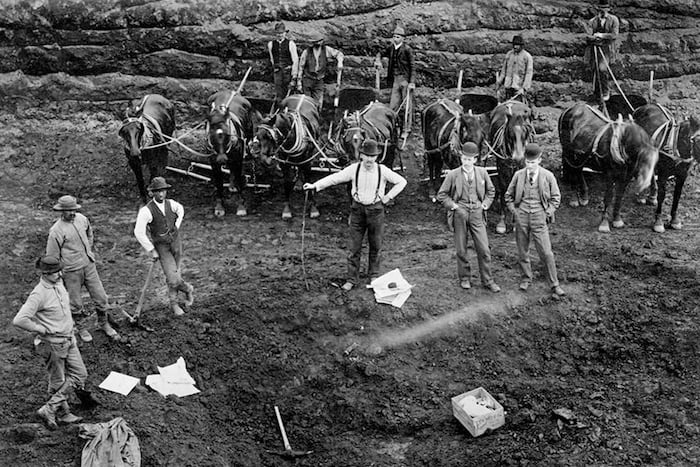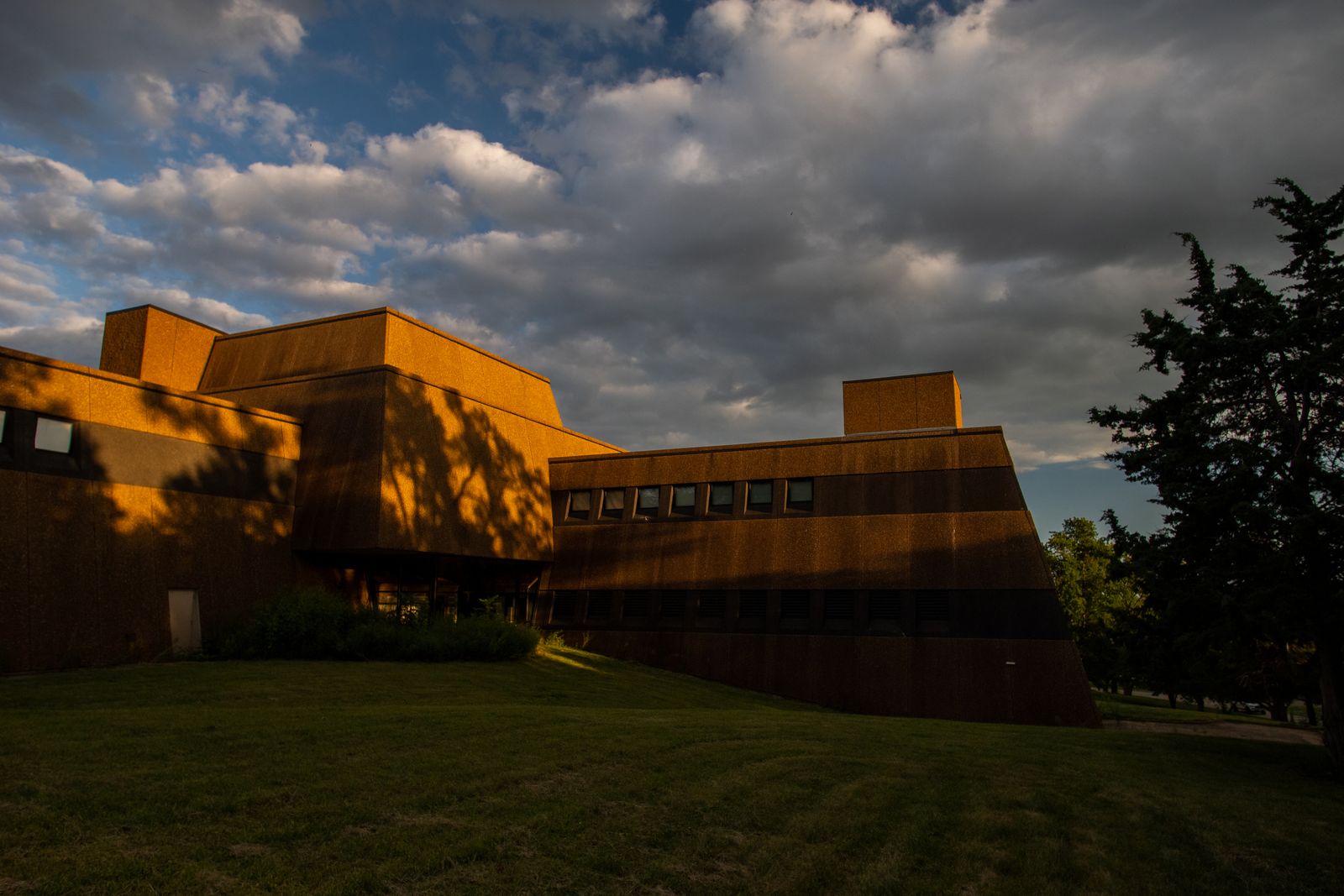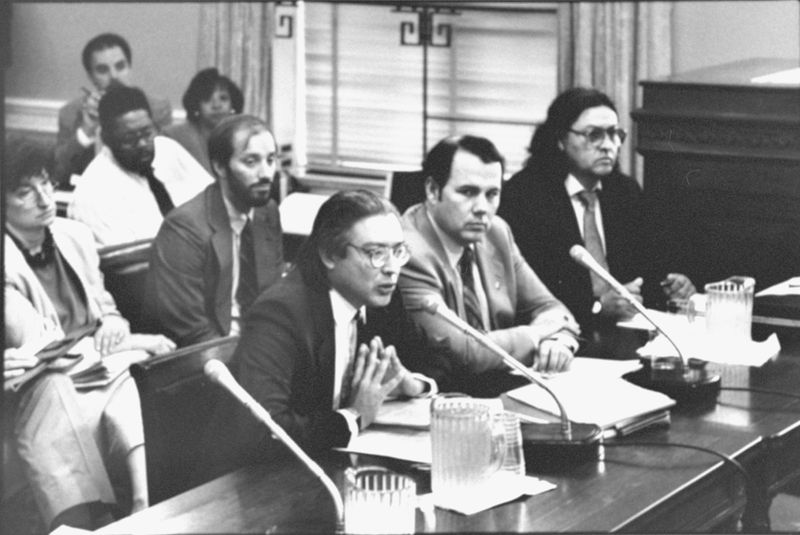Arkansas
Institutions reported making 88% of the more than 4,900 Native American remains taken from Arkansas available for return to tribes under NAGPRA.
There are 10 institutions located in Arkansas that reported Native American remains taken from across the country.
| Institution | Remains Not Made Available for Return | Remains Made Available for Return | % of Remains Made Available for Return |
|---|---|---|---|
| University of Arkansas | 143 | 3,270 | 96% |
| U.S. Department of Defense | 74 | 88 | 54% |
| Shiloh Museum of Ozark History | 2 | 4 | 67% |
| Fort Smith Museum of History | 1 | 0 | 0% |
| U.S. Department of the Interior | 1 | 46 | 98% |
| Arkansas Department of Parks and Tourism, Toltec Mounds Archeological Park | 0 | 15 | 100% |
| Arkansas Highway and Transportation Department | 0 | 133 | 100% |
| Arkansas State University Museum | 0 | 157 | 100% |
| Madison County Coroner's Office | 0 | 3 | 100% |
| U.S. Department of Agriculture | 0 | 59 | 100% |
There are 49 institutions that reported Native American remains taken from Arkansas.
| Institution | Remains Not Made Available for Return | Remains Made Available for Return | % of Remains Made Available for Return |
|---|---|---|---|
| University of Alabama Museums | 206 | 0 | 0% |
| U.S. Department of Defense | 59 | 88 | 60% |
| Field Museum | 54 | 0 | 0% |
| University of Arkansas | 49 | 3,200 | 98% |
| Rochester Museum and Science Center | 44 | 0 | 0% |
| American Museum of Natural History | 40 | 0 | 0% |
| University of Missouri, Columbia, Museum of Anthropology | 39 | 0 | 0% |
| Harvard University | 23 | 132 | 85% |
| New York State Museum | 22 | 0 | 0% |
| University of Oklahoma | 7 | 8 | 53% |
| Robert S. Peabody Institute of Archaeology, Phillips Academy | 6 | 0 | 0% |
| Buffalo Museum of Science | 4 | 0 | 0% |
| Hastings Museum | 4 | 3 | 43% |
| Tennessee Department of Environment and Conservation, Division of Archaeology | 4 | 0 | 0% |
| Nassau County Department of Parks and Recreation | 3 | 0 | 0% |
| University of Memphis | 3 | 0 | 0% |
| University of Michigan Museum of Anthropology | 2 | 0 | 0% |
| Bridgewater College | 1 | 0 | 0% |
| Fort Smith Museum of History | 1 | 0 | 0% |
| Kansas City Museum | 1 | 0 | 0% |
| Missouri Historical Society | 1 | 0 | 0% |
| U.S. Department of the Interior | 1 | 46 | 98% |
| University of Louisiana at Monroe | 1 | 0 | 0% |
| University of North Carolina at Chapel Hill | 1 | 0 | 0% |
| University of Pennsylvania Museum of Archaeology and Anthropology | 1 | 0 | 0% |
| West Texas A and M University, Panhandle-Plains Historical Museum | 1 | 0 | 0% |
| Arkansas Department of Parks and Tourism, Toltec Mounds Archeological Park | 0 | 15 | 100% |
| Arkansas Highway and Transportation Department | 0 | 133 | 100% |
| Arkansas State University Museum | 0 | 157 | 100% |
| Beloit College, Logan Museum of Anthropology | 0 | 2 | 100% |
| Carnegie Museum of Natural History | 0 | 1 | 100% |
| Colgate University, Longyear Museum of Anthropology | 0 | 2 | 100% |
| Denver Museum of Nature and Science | 0 | 1 | 100% |
| Gilcrease Museum | 0 | 289 | 100% |
| Illinois State Museum | 0 | 21 | 100% |
| Indiana University | 0 | 158 | 100% |
| Louisiana Department of Culture, Recreation, and Tourism | 0 | 1 | 100% |
| McWane Science Center | 0 | 1 | 100% |
| Memphis Pink Palace Museum | 0 | 6 | 100% |
| Mercyhurst Univ. | 0 | 2 | 100% |
| Museum of Natural History and Planetarium | 0 | 1 | 100% |
| New York University, College of Dentistry | 0 | 8 | 100% |
| Northern Illinois Univ. | 0 | 3 | 100% |
| Shiloh Museum of Ozark History | 0 | 4 | 100% |
| Springfield Science Museum | 0 | 2 | 100% |
| U.S. Department of Agriculture | 0 | 59 | 100% |
| University of Iowa, Office of the State Archaeologist | 0 | 2 | 100% |
| University of South Florida | 0 | 1 | 100% |
| University of Tulsa, Department of Anthropology | 0 | 21 | 100% |
Institutions made Native American remains taken from Arkansas available for return to nine tribes.
| Tribe | Remains Made Available for Return to Tribe |
|---|---|
| Quapaw Nation | 2,906 |
| Caddo Nation of Oklahoma | 1,260 |
| Osage Nation | 444 |
| Tunica-Biloxi Indian Tribe | 395 |
| Cherokee Nation | 14 |
| United Keetoowah Band of Cherokee Indians in Oklahoma | 14 |
| Choctaw Nation of Oklahoma | 12 |
| Kaw Nation, Oklahoma | 2 |
| Shawnee Tribe | 1 |
Institutions reported Native American remains taken from 69 counties in Arkansas.
| County | Remains Taken From County Not Made Available for Return | Remains Made Available for Return | % of Remains Made Available for Return |
|---|---|---|---|
| Mississippi County | 104 | 479 | 82% |
| Union County | 49 | 47 | 49% |
| Poinsett County | 39 | 546 | 93% |
| Phillips County | 37 | 14 | 27% |
| Craighead County | 30 | 250 | 89% |
| Cross County | 25 | 456 | 95% |
| St. Francis County | 19 | 35 | 65% |
| Clark County | 9 | 119 | 93% |
| Hot Spring County | 9 | 102 | 92% |
| Benton County | 8 | 15 | 65% |
| Sevier County | 6 | 14 | 70% |
| Crittenden County | 5 | 272 | 98% |
| Bradley County | 4 | 22 | 85% |
| Conway County | 4 | 11 | 73% |
| Garland County | 4 | 27 | 87% |
| Scott County | 4 | 44 | 92% |
| Arkansas County | 3 | 29 | 91% |
| Ashley County | 2 | 41 | 95% |
| Baxter County | 2 | 4 | 67% |
| Chicot County | 2 | 19 | 90% |
| Crawford County | 2 | 4 | 67% |
| Jefferson County | 2 | 8 | 80% |
| Lafayette County | 2 | 10 | 83% |
| Logan County | 2 | 8 | 80% |
| Newton County | 2 | 50 | 96% |
| Madison County | 1 | 15 | 94% |
| Miller County | 1 | 398 | 100% |
| Montgomery County | 1 | 7 | 88% |
| Pope County | 1 | 26 | 96% |
| Saline County | 1 | 6 | 86% |
| Searcy County | 1 | 6 | 86% |
| White County | 1 | 30 | 97% |
| Yell County | 1 | 22 | 96% |
| Boone County | 0 | 2 | 100% |
| Calhoun County | 0 | 6 | 100% |
| Carroll County | 0 | 12 | 100% |
| Clay County | 0 | 11 | 100% |
| Cleveland County | 0 | 2 | 100% |
| Columbia County | 0 | 1 | 100% |
| Dallas County | 0 | 1 | 100% |
| Desha County | 0 | 1 | 100% |
| Drew County | 0 | 161 | 100% |
| Faulkner County | 0 | 1 | 100% |
| Franklin County | 0 | 4 | 100% |
| Grant County | 0 | 2 | 100% |
| Greene County | 0 | 16 | 100% |
| Hempstead County | 0 | 42 | 100% |
| Howard County | 0 | 18 | 100% |
| Independence County | 0 | 56 | 100% |
| Izard County | 0 | 8 | 100% |
| Jackson County | 0 | 24 | 100% |
| Johnson County | 0 | 3 | 100% |
| Lawrence County | 0 | 36 | 100% |
| Lee County | 0 | 42 | 100% |
| Little River County | 0 | 76 | 100% |
| Lonoke County | 0 | 25 | 100% |
| Marion County | 0 | 18 | 100% |
| Monroe County | 0 | 22 | 100% |
| Ouachita County | 0 | 31 | 100% |
| Perry County | 0 | 1 | 100% |
| Pike County | 0 | 1 | 100% |
| Prairie County | 0 | 13 | 100% |
| Pulaski County | 0 | 89 | 100% |
| Randolph County | 0 | 10 | 100% |
| Sebastian County | 0 | 1 | 100% |
| Stone County | 0 | 6 | 100% |
| Van Buren County | 0 | 1 | 100% |
| Washington County | 0 | 8 | 100% |
| Woodruff County | 0 | 3 | 100% |
Know how an institution is handling repatriation? Have a personal story to share? We'd like to hear from you.
Watch an informational webinar with our reporters.
This tool presents a dataset maintained by the National Park Service containing all the Native American human remains and associated funerary objects that institutions have reported to the federal government under the Native American Graves Protection and Repatriation Act. The dataset includes information about the state and county where remains and objects were taken from, which institutions hold them and whether they have been made available for return to tribes.
The data is self-reported by institutions. The amount of unrepatriated Native American remains reported by institutions is a minimum estimate of individuals and institutions frequently adjust these numbers when they reinventory groups of remains. Some institutions that are subject to NAGPRA have also entirely failed to report the remains in their possession. As a result, the numbers provided are best taken as estimates. The actual number and geographic scope of what’s held by publicly funded institutions is larger than what is presently documented.
ProPublica supplemented this dataset with information about cultural affiliation and disposition to specific tribes by systematically parsing the text of Notices of Inventory Completion published in the Federal Register. An additional dataset from the Department of Housing and Urban Development, the Tribal Directory Assessment Tool, was used for the section on remains not made available for return from counties that each tribe has indicated interest in to the federal government.
Institution location and tribal headquarters location information was provided by National NAGPRA. The location of some groups that are not federally recognized was provided through research by ProPublica.
Institutions that are part of a larger entity are grouped. (For example, the Mesa Verde National Park is part of the U.S. Department of the Interior.)
Institutions that have not submitted information to the federal government are not listed. The Smithsonian Institution is not listed because its repatriation process falls under the National Museum of the American Indian Act and it is not required to publicly report its holdings with the same detail as institutions subject to NAGPRA.
If you work for an institution and would like to provide comment on your institution’s repatriation efforts, please email [email protected]. If you think the data is incorrect or have a data request, please get in touch. We are aware of some issues with the accuracy of location information and tribes mistakenly being identified for disposition of Native American remains in published notices.
If you want to share something else with ProPublica, we’d like to hear from you.
If you have questions about implementing or complying with the Native American Graves Protection and Repatriation Act, get in touch with National NAGPRA or the NAGPRA Community of Practice.
We use the word “tribes” to refer to all groups that institutions made Native American remains available to under NAGPRA. This includes tribes, nations, bands, pueblos, communities, Native Alaskan villages, Native Hawaiian organizations and non-federally recognized groups.
Data sources from Department of the Interior, National Park Service, National NAGPRA Program, the Federal Register, Department of Housing and Development, Tribal Directory Assessment Tool


